I always get confused when I try to make or even think about French pastries. With so many delicious and delicate options, where do you even start? Whether you’re craving the buttery layers of a croissant, the sweet, creamy filling of an éclair, or the melt-in-your-mouth goodness of madeleines, French pastries have a way of capturing our hearts. These pastries are not just desserts; they’re a celebration of French culture, centuries of baking tradition, and the joy of creating something truly indulgent.
But don’t let the idea of making them at home intimidate you! With a little guidance, you can bring the magic of a Parisian patisserie right into your kitchen. In this guide, we’ll explore the most iconic of these pastries, break down their ingredients, and give you easy-to-follow steps to recreate them at home. Whether you’re a seasoned baker or a beginner, you’ll discover the tips and tricks you need to make your pastry dreams come true. So, let’s dive into the sweet world of pastries of La France together!
Table of Contents
1. Key Benefits of French Pastries
French pastries are more than just delicious treats; they’re a delightful blend of history, technique, and artistry that can elevate any meal or occasion. Whether you’re enjoying them with a cup of coffee or serving them at a special gathering, there’s something inherently comforting about the buttery, flaky layers and rich flavors of French pastries. Here’s why they’re so irresistible:
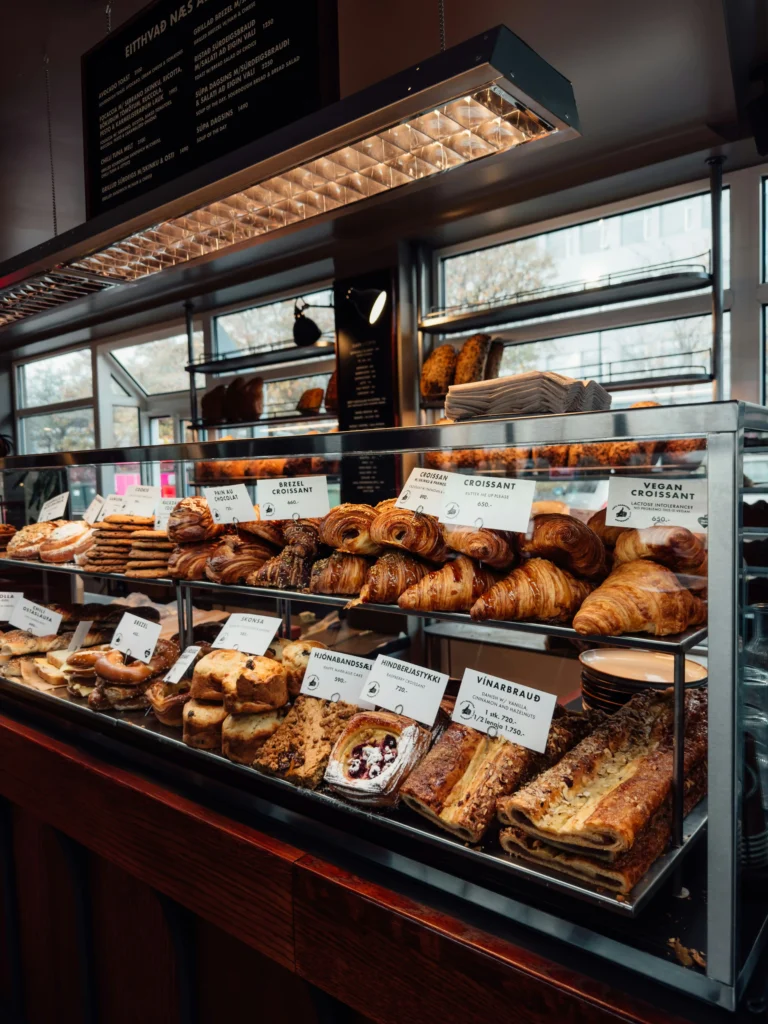
- Timeless Elegance: French pastries carry a rich tradition that dates back centuries. With their delicate textures and beautiful presentation, they can transform any table into something special, whether it’s a casual breakfast or a lavish celebration.
- Versatile Enjoyment: From breakfast to dessert, French pastries are incredibly versatile. Enjoy a light croissant in the morning, a decadent éclair for an afternoon treat, or a rich tart after dinner. There’s a pastry for every occasion.
- Perfect for Sharing: Baking these pastries at home can turn any day into an event. Picture sitting around the table with friends and family, sharing the fruits of your labor. There’s something magical about creating and sharing these delights that brings people together.
- A Boost of Culinary Confidence: Once you master a few of these pastries, you’ll feel like a true patisserie chef! And while they might seem intimidating at first, the beauty of French pastries lies in the technique rather than complexity, so with practice, you’ll gain both confidence and skill.
- A True Sensory Experience: The process of making French pastries is as enjoyable as eating them. From the feel of the dough to the fragrant smells filling your kitchen, it’s a sensory experience that’s hard to beat.
So, whether you’re new to baking or have tried your hand at a few pastries already, these pastries offer something for everyone. They might take a little time and patience, but trust me, the rewards are worth it. Ready to dive in and make some of these mouthwatering classics? Let’s get started!
2. Common Ingredients Used in French Pastries
When it comes to French pastries, the ingredients are just as important as the technique. Using high-quality, fresh ingredients is essential to achieving the rich flavors and perfect textures that make these pastries so irresistible. Here’s a breakdown of the most commonly used ingredients you’ll find in many pastries of France :
- Butter: This is the star ingredient in many French pastries, especially in croissants and puff pastry. The quality of the butter you use plays a significant role in the final result, so opt for unsalted butter with a high fat content for the best flavor and texture. The butter’s ability to create flaky layers is what gives French pastries their signature melt-in-your-mouth quality.
- Flour: All-purpose flour is typically used for many French pastries, but some recipes, like for macarons or tarts, might require specific types of flour, such as pastry flour or almond flour. The right flour helps create the tender crumb or crisp crust that’s characteristic of these pastries.
- Eggs: Eggs add richness and structure to French pastries. They help bind ingredients together and provide color and texture, particularly in pastries like éclairs, cream puffs, and custard-based treats like tarts.
- Sugar: Sugar not only adds sweetness but also plays a role in texture. It helps create that golden-brown finish on pastries like croissants and éclairs and adds moisture to doughs. In some recipes, like macarons, sugar helps stabilize egg whites.
- Cream: Heavy cream is often used to make rich fillings, such as the creamy centers in éclairs or the whipped cream in profiteroles. It adds a luxurious texture and mouthfeel that makes French pastries feel indulgent.
- Yeast: For pastries like croissants and brioche, yeast is essential for creating the fluffy, airy texture. The yeast allows the dough to rise and develop its characteristic lightness and depth of flavor.
- Vanilla: Whether in custards, creams, or batters, vanilla is a common flavoring in these pastries. It adds warmth and depth to the sweet notes of pastries like madeleines and tarts.
- Chocolate: A staple in many French pastries, chocolate is used both for filling (like in éclairs or tarts) and for decorating. Dark, milk, or white chocolate adds richness and a touch of decadence that pairs beautifully with lighter pastries.
- Almonds: Almonds (or almond flour) are frequently used in French pastries, particularly in items like frangipane tarts or macarons. They lend a subtle nutty flavor and delicate texture to the pastries.
- Fruit: Fresh or preserved fruits, like berries, apples, and citrus, are often used to complement the sweetness of the pastries. Tarts, for example, often feature fruits like raspberries or apples as a centerpiece.
Each of these ingredients plays a crucial role in creating the textures and flavors that make thses pastries so beloved. When combined with the right techniques, they create pastries that are both visually stunning and incredibly delicious. Now that you know the basics, let’s explore how to distinguish between different types of French pastries!
3. How to Differentiate Between French Pastry Types
French pastries come in many shapes, sizes, and flavors, each with its unique characteristics. Understanding the differences between the types can help you choose the right pastry for the occasion, as well as give you a deeper appreciation for the techniques behind each one. Let’s break down some of the most popular pastries and how to differentiate them:
1. Croissants 🥐 vs. Pain au Chocolat
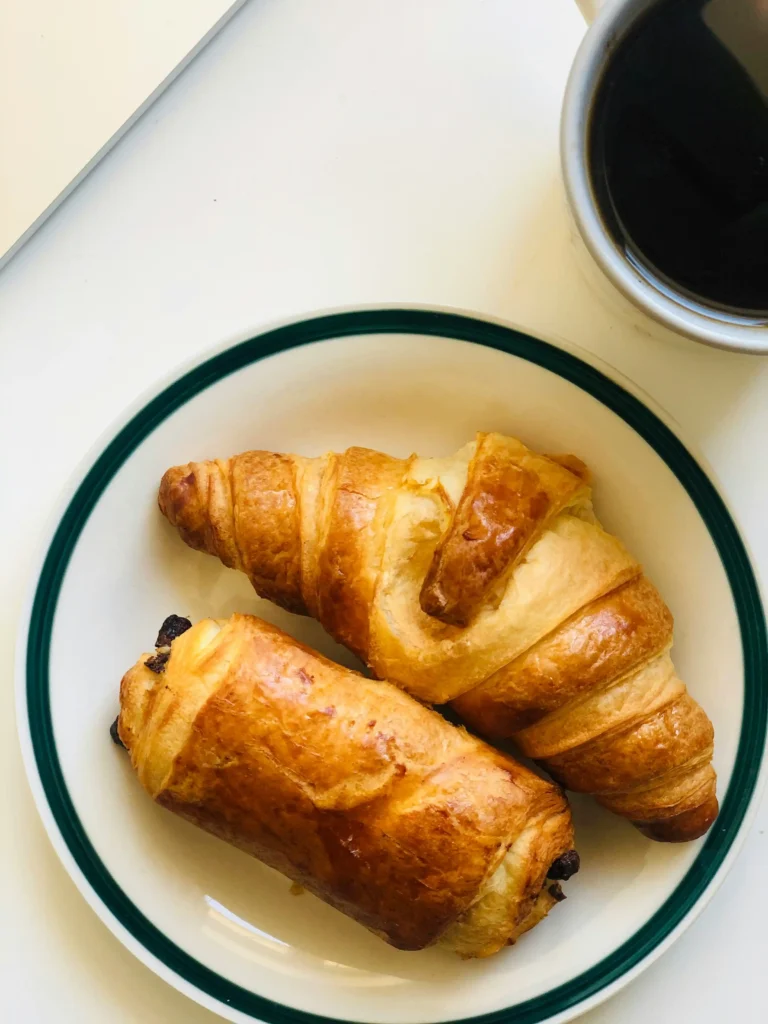
- Croissants: These are the quintessential French breakfast pastry. Known for their flaky, buttery layers, croissants are made from a laminated dough that’s folded and rolled multiple times to create their signature airy texture. They’re typically shaped into a crescent and enjoyed plain or filled with almond paste (pain au chocolat).
- Pain au Chocolat: Often confused with croissants, pain au chocolat is essentially the same dough but with a twist—chocolate! These pastries are rectangular in shape and filled with one or two pieces of dark chocolate. They offer a delightful combination of buttery dough and sweet chocolate.
2. Éclairs 🍫 vs. Profiteroles
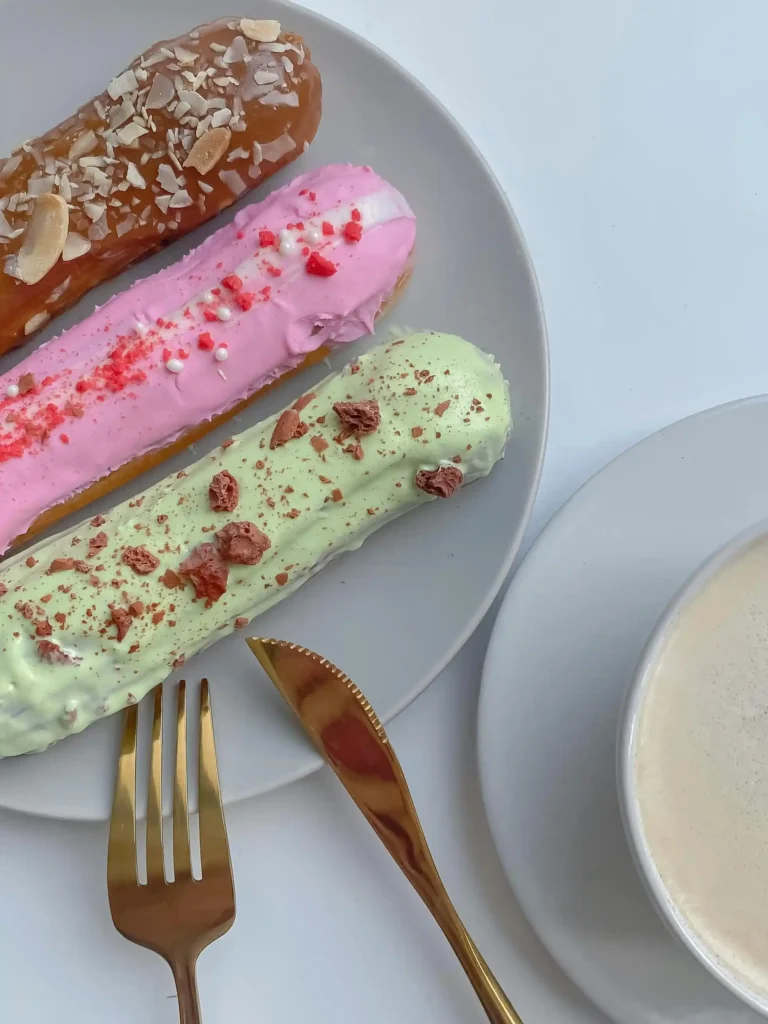
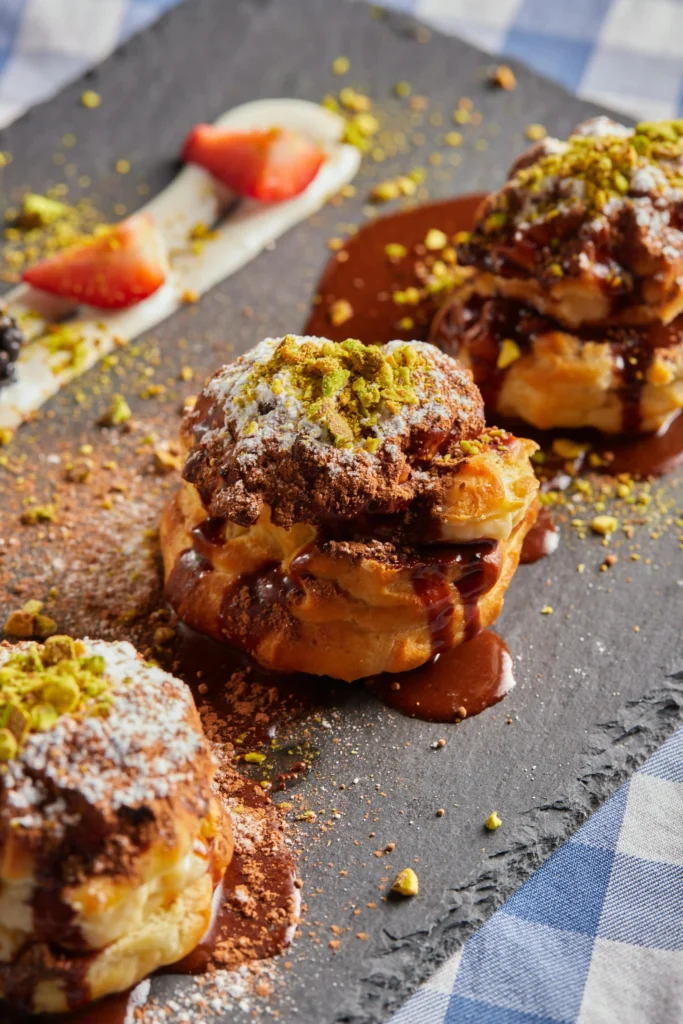
- Éclairs: Éclairs are long, slender pastries made from choux pastry (a light, egg-based dough). They are typically filled with pastry cream (either vanilla or chocolate) and topped with a shiny glaze. Éclairs have a delicate crunch and a soft, creamy filling, making them a popular choice for desserts at dinner parties.
- Profiteroles: Profiteroles are small, round pastries made from the same choux pastry dough used for éclairs. They’re typically filled with whipped cream or custard and drizzled with chocolate or caramel. While éclairs are often larger and more structured, profiteroles have a softer texture and bite-sized appeal, perfect for sharing.
3. Tarte Tatin 🍏 vs. Tarte aux Fruits
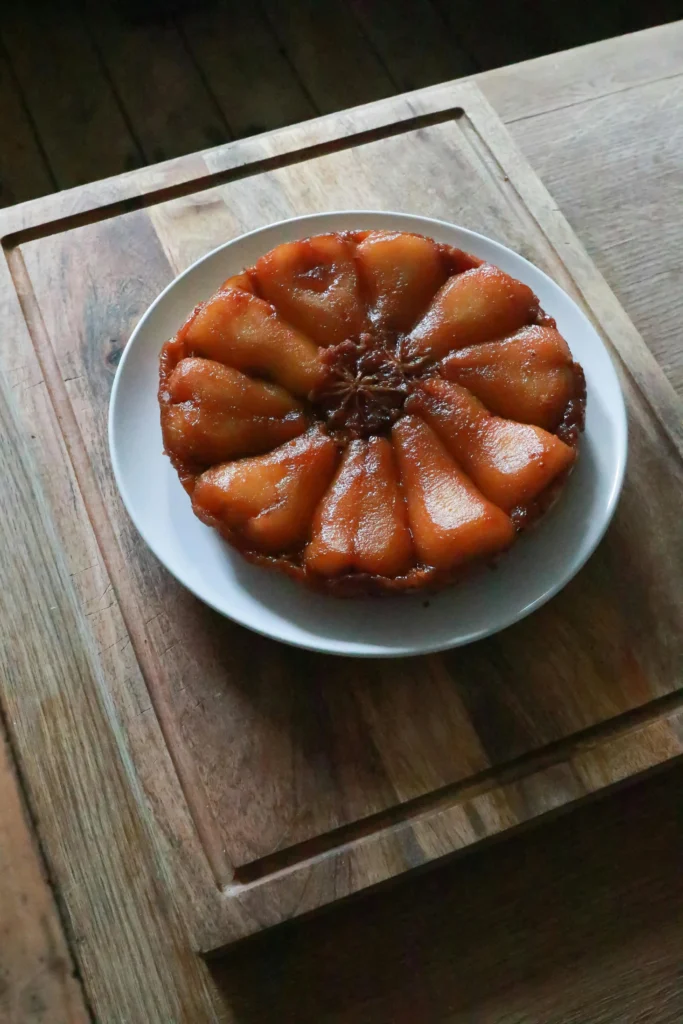
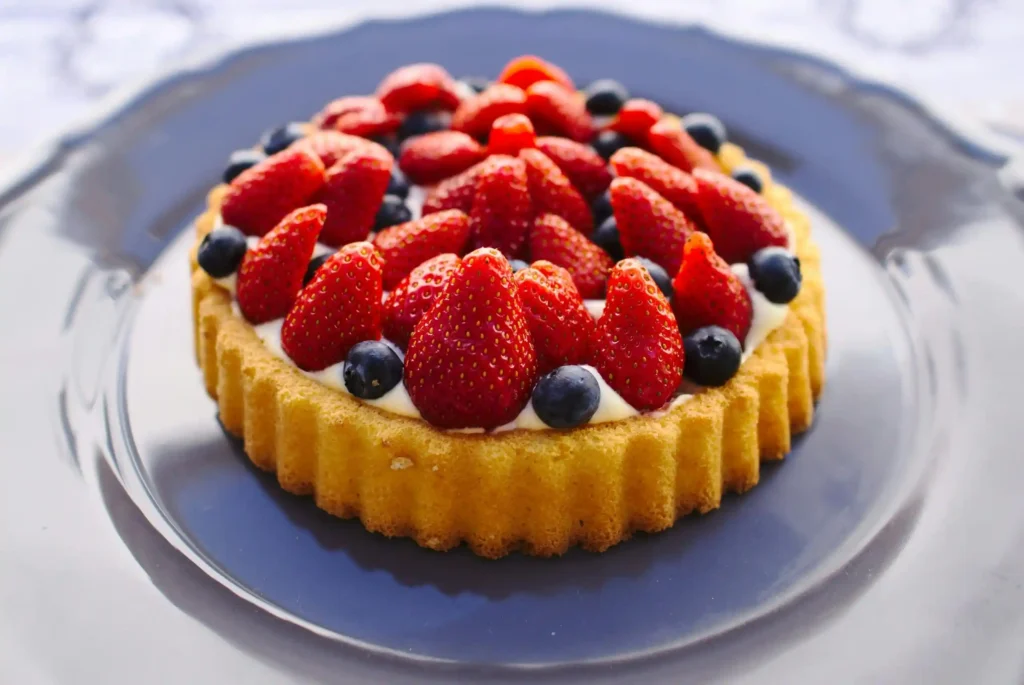
- Tarte Tatin: This iconic upside-down caramelized apple tart is made with puff pastry and a rich, buttery caramel sauce. The apples are cooked in sugar and butter before being topped with the pastry and baked. When flipped, the result is a gorgeous, golden tart with a sweet, caramelized finish.
- Tarte aux Fruits: A more traditional French tart, this dessert features a crisp pastry crust filled with pastry cream and topped with an assortment of fresh fruit. It’s a light, refreshing treat, perfect for showcasing seasonal fruits like strawberries, raspberries, and kiwi.
4. Madeleines 🧁 vs. Financiers
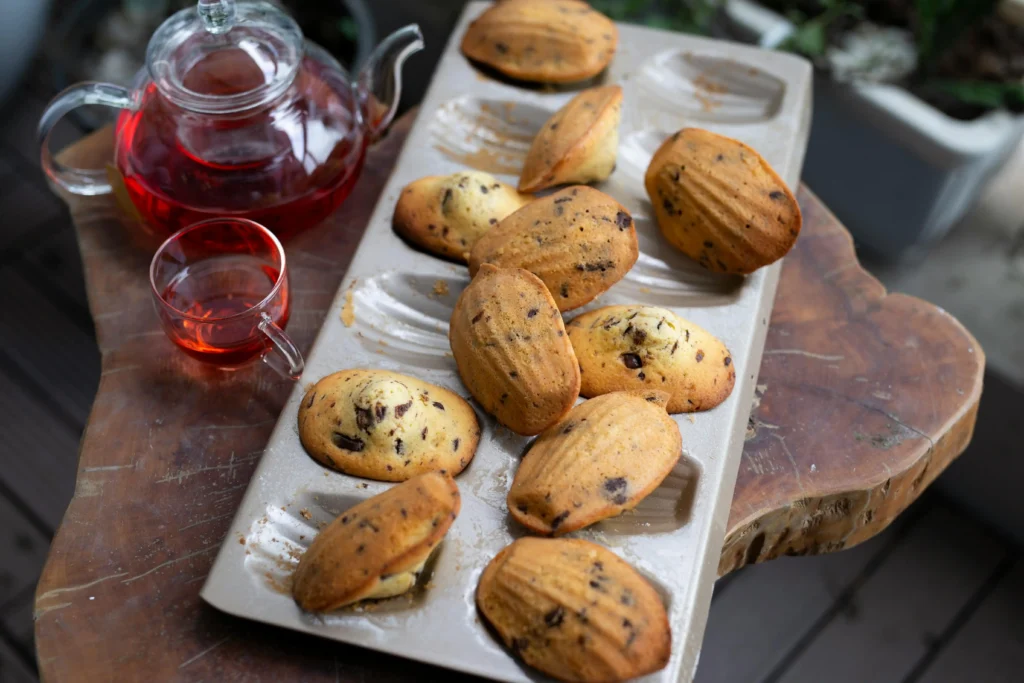
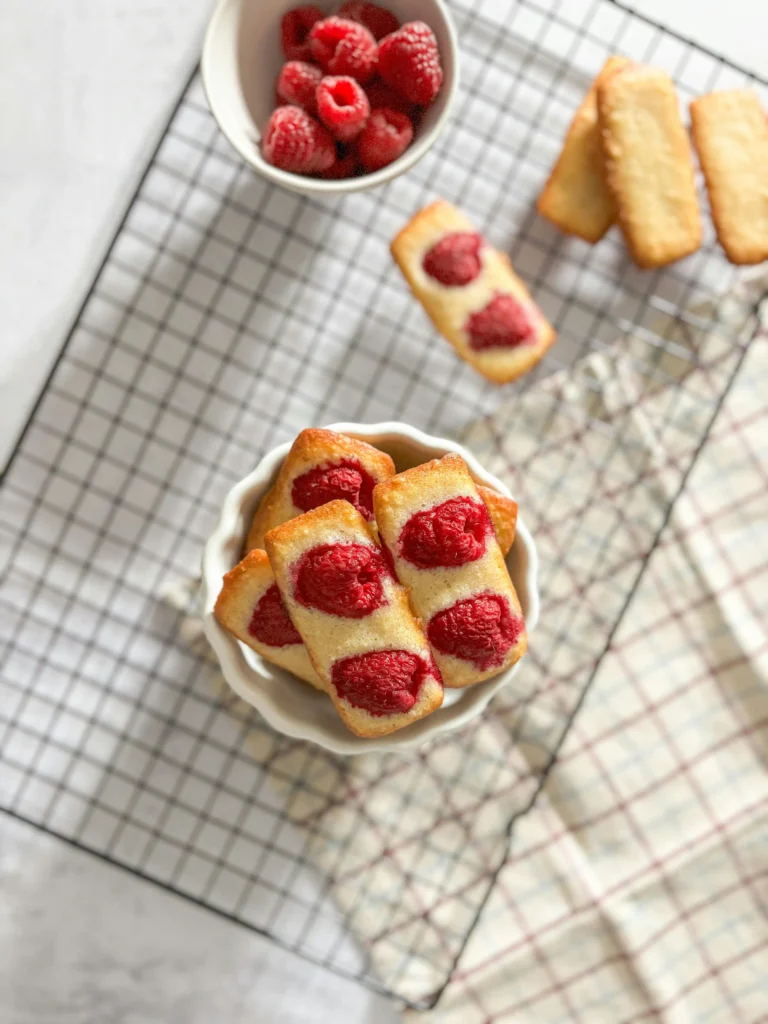
- Madeleines: These small, shell-shaped sponge cakes are a classic French treat. Made with a light batter, madeleines are typically flavored with lemon or orange zest. Their texture is spongy and soft, perfect for dipping in tea or coffee.
- Financiers: These delicate, almond-flavored cakes are named for their gold bar shape, which resembles a financier’s ingot. Made with browned butter and almond flour, financiers have a slightly denser texture than madeleines, with a nutty, buttery flavor.
5. Choux Pastry 🍥 vs. Puff Pastry
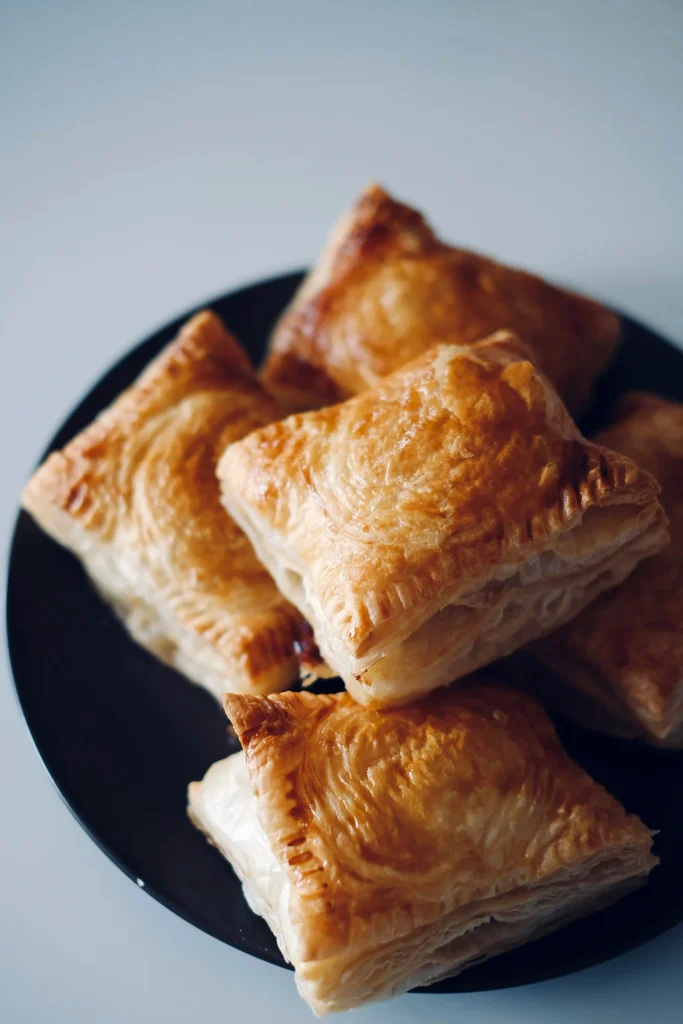
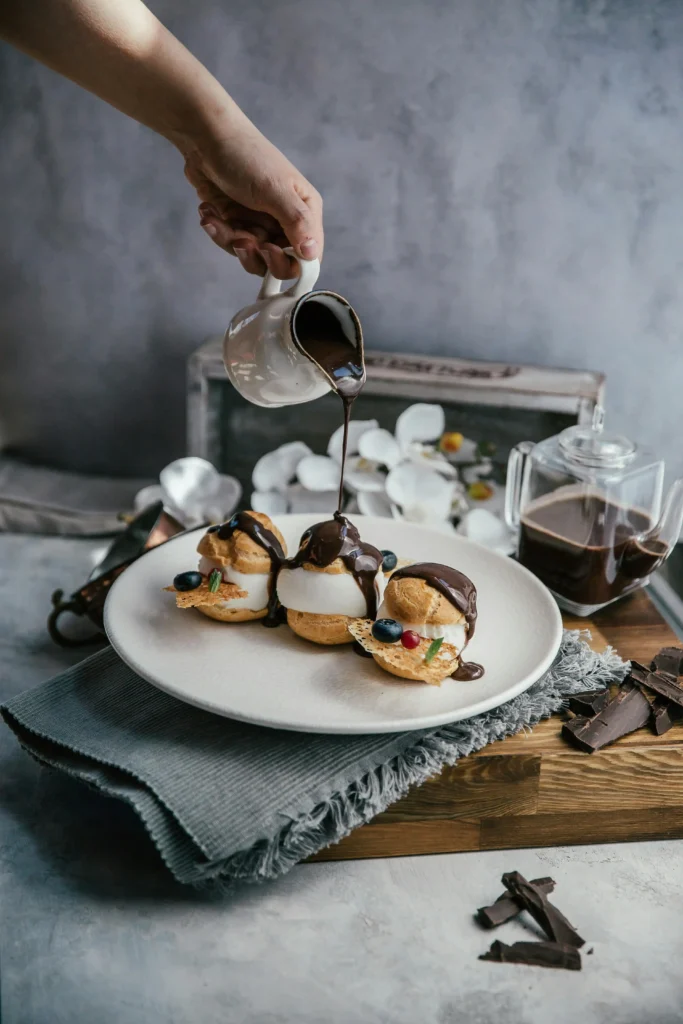
- Choux Pastry: This is a light, airy dough that is used to make éclairs, profiteroles, and gougères. The dough is unique because it is cooked on the stove before being baked, resulting in a puffy, hollow center. Choux pastry is typically filled with creams or custards, making it a versatile option for sweet or savory treats.
- Puff Pastry: Known for its crisp, flaky layers, puff pastry is made by layering dough and butter through a process called lamination. This dough puffs up when baked due to steam trapped between the layers. Puff pastry is used for both sweet and savory pastries, such as tarts, palmiers, and vol-au-vents.
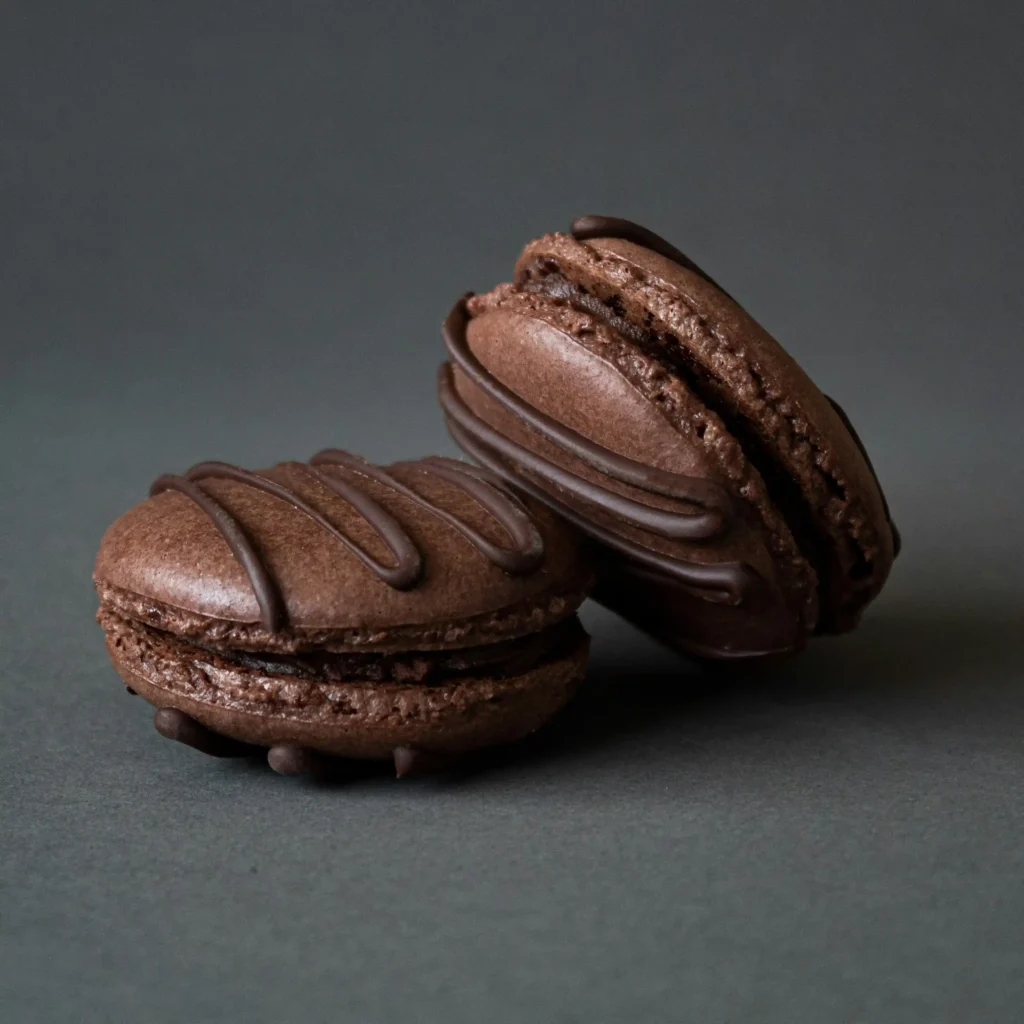
6. Macarons 🎨 vs. Macaroons
- Macarons: These delicate, almond meringue-based cookies are sandwiched together with fillings like buttercream, ganache, or fruit jams. Macarons are colorful, smooth, and slightly chewy in texture, making them a showstopper for any dessert table.
- Macaroons: Often confused with macarons, macaroons are made with shredded coconut and egg whites. These chewy, coconut-based treats have a more rustic texture and are typically baked into small, mound-shaped cookies. Unlike macarons, macaroons are not typically filled but can be dipped in chocolate.
By understanding the key differences between these iconic pastries of France, you’ll be able to select the perfect pastry for any occasion and feel more confident when baking them yourself. Whether you’re drawn to the buttery layers of a croissant or the sweet, creamy filling of an éclair, there’s a French pastry to suit every taste! Now, let’s dive into the ingredients and instructions for three of these pastries so you can start baking like a true pâtissier.
4. Ingredients and Instructions for Three Classic French Pastries
Now that we’ve explored the different types of these pastries, let’s dive into the ingredients and step-by-step instructions for making three of these beloved treats: Croissants, Éclairs, and Madeleines. These pastries will bring the magic of a French pâtisserie into your kitchen. Don’t worry—though they may seem challenging at first, with a little patience and practice, you’ll be a pro in no time!
1. Croissants 🥐
Ingredients:
- 500g all-purpose flour
- 10g salt
- 50g sugar
- 20g instant yeast
- 300ml warm milk
- 30g unsalted butter (softened)
- 300g cold unsalted butter (for laminating)
- 1 egg (for egg wash)
Instructions:
- Prepare the Dough: In a large mixing bowl, combine the flour, salt, sugar, and instant yeast. Add warm milk and softened butter, then mix until a dough forms. Knead the dough on a lightly floured surface for about 10 minutes, until smooth. Let it rest in a bowl covered with a damp cloth for 1 hour or until doubled in size.
- Laminate the Dough: Roll the dough into a rectangular shape. Place the cold butter in the center and fold the dough over it, sealing the edges. Roll the dough out into a long rectangle and fold it into thirds, like a letter. Chill in the fridge for 30 minutes. Repeat this rolling and folding process two more times, chilling in between.
- Shape the Croissants: After the final fold, roll the dough into a large rectangle. Cut it into triangles. Starting from the wide edge, roll each triangle tightly to form a crescent shape. Place the croissants on a baking sheet lined with parchment paper.
- Proof the Croissants: Cover the croissants with a kitchen towel and let them proof for 1-2 hours, or until they’ve doubled in size.
- Bake: Preheat the oven to 375°F (190°C). Brush the croissants with an egg wash (beaten egg). Bake for 15-20 minutes, or until golden brown and crispy. Let them cool slightly before serving.
2. Éclairs 🍫
Ingredients:
- 125g all-purpose flour
- 75g unsalted butter
- 250ml water
- 4 large eggs
- 1/2 tsp salt
- 1/2 tsp sugar
- 250ml heavy cream (for filling)
- 100g dark chocolate (for glazing)
- 2 tbsp powdered sugar (for dusting)
Instructions:
- Prepare the Choux Pastry: In a saucepan, bring the water, butter, salt, and sugar to a boil. Once the butter is melted, add the flour all at once and stir vigorously until the dough forms a smooth ball and pulls away from the sides of the pan. Remove from heat and let cool for 5 minutes.
- Add the Eggs: Add the eggs one at a time, mixing well after each addition until the dough is smooth and glossy. Transfer the dough to a piping bag.
- Shape the Éclairs: Preheat the oven to 425°F (220°C). Line a baking sheet with parchment paper. Pipe the dough into long strips, about 4 inches long. Space them out evenly.
- Bake the Éclairs: Bake the éclairs for 10 minutes, then reduce the heat to 350°F (175°C) and bake for an additional 20-25 minutes until golden and crisp. Let them cool completely.
- Fill and Glaze: Whip the heavy cream until soft peaks form and fill a piping bag with it. Using a skewer, poke small holes in the bottom of each éclair and pipe in the whipped cream. Melt the dark chocolate and pour it over the éclairs to glaze. Let it set before serving.
3. Madeleines 🧁
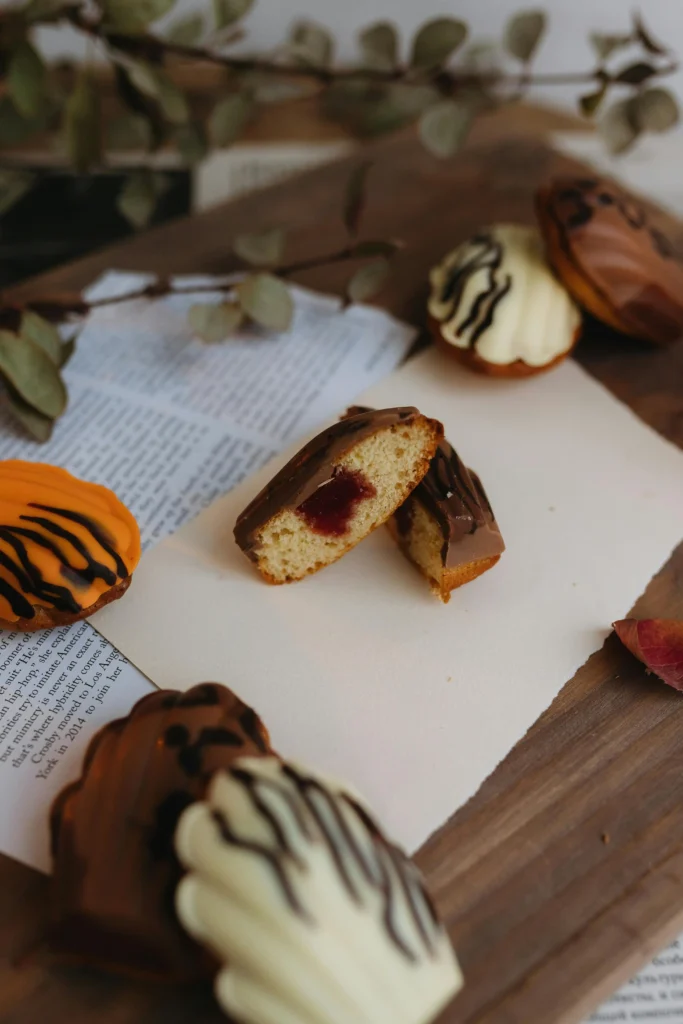
Ingredients:
- 100g all-purpose flour
- 100g powdered sugar
- 2 large eggs
- 100g unsalted butter (melted)
- 1 tsp vanilla extract
- Zest of 1 lemon
- 1/2 tsp baking powder
- Pinch of salt
Instructions:
- Prepare the Madeleine Batter: In a bowl, whisk the eggs and powdered sugar together until light and fluffy. Gently fold in the flour, baking powder, and salt. Add the melted butter, vanilla extract, and lemon zest, mixing until combined.
- Chill the Batter: Cover the batter and refrigerate for at least 30 minutes to allow it to firm up. This helps the madeleines achieve their signature hump shape when baked.
- Preheat and Grease the Pan: Preheat the oven to 375°F (190°C). Grease a madeleine pan with butter and dust with flour to prevent sticking.
- Fill the Pan: Spoon the batter into each madeleine mold, filling them about 3/4 of the way full.
- Bake: Bake the madeleines for 10-12 minutes, or until they are golden brown and a toothpick inserted into the center comes out clean. Let them cool for a few minutes before removing them from the pan.
These three classic pastries—croissants, éclairs, and madeleines—are a perfect introduction to the world of French baking. They each offer a unique experience in both flavor and texture, bringing a touch of France into your home. Whether you’re a beginner or an experienced baker, these recipes will help you craft pastries that are as beautiful as they are delicious.
Now that you know how to make these delightful treats, it’s time to dive into some pro tips and variations to make them even more extraordinary!
5. Pro Tips and Variations for French Pastries
To elevate your French pastry game, here are some pro tips and variations for each of the three pastries we’ve covered. These insights will help you achieve even better results, whether you’re a first-time baker or a seasoned pro. Plus, I’ve included some creative variations to help you personalize your pastries to suit your taste!
Pro Tips for Croissants 🥐:
- Use Cold Butter: When laminating the dough, always use very cold butter. This ensures the butter remains in layers as you roll and fold the dough, which creates the signature flaky texture. If the butter starts to soften, pop the dough back in the fridge for a few minutes to firm it up.
- Don’t Skip the Resting Time: The resting time between folds is essential. It allows the gluten to relax and prevents the dough from becoming too tough, which can affect the final texture. Patience here is key!
- Shape with Precision: When rolling out the dough and cutting it into triangles, make sure the edges are even. This ensures that your croissants bake uniformly, giving them that perfect crescent shape.
Variations:
- Almond Croissants: For a delicious twist, add almond paste or almond filling before rolling up your croissants. After baking, dust them with powdered sugar for a sweet finish.
- Ham and Cheese Croissants: For a savory variation, add thin slices of ham and cheese inside the dough before rolling. These make for a great snack or lunch option.
Pro Tips for Éclairs 🍫:
- Achieve Perfect Choux Pastry: The key to a successful éclair is getting the right consistency of dough. When the dough forms a smooth ball and easily pulls away from the sides of the pan, you know it’s ready. Avoid overmixing or undercooking the dough, as this can affect the rise.
- Glaze with Precision: When glazing the éclairs with melted chocolate, make sure to do it while the chocolate is still warm. This ensures a smooth, glossy finish. If you want a professional touch, dip the éclairs halfway into the chocolate, allowing the excess to drip off before setting.
- Cool the Pastries First: Allow your éclairs to cool completely before filling them with cream. This prevents the filling from melting and ensures that your éclairs hold their shape.
Variations:
- Coffee Éclairs: Infuse the pastry cream with a bit of instant coffee or espresso powder for a rich coffee flavor. Top with a coffee-flavored glaze for a true coffee lover’s treat.
- Fruit Éclairs: Instead of using traditional chocolate for the glaze, top the éclairs with a fruit glaze (like raspberry or strawberry) and fill them with a fresh fruit-flavored cream for a lighter, fruit-forward variation.
Pro Tips for Madeleines 🧁:
- Rest the Batter: Just like with croissants, allowing your madeleine batter to chill for at least 30 minutes is crucial. This helps the batter firm up and results in the classic madeleine hump when baked.
- Grease the Pan Well: Madeleines are best baked in a special madeleine pan, which gives them their signature shell shape. Be sure to butter and flour the pan generously to avoid sticking, especially if you’re using a non-stick version.
- Use Fresh Zest: Adding lemon zest (or other citrus zests) to the batter gives madeleines a lovely, refreshing flavor. Be sure to use fresh zest for the best aroma and taste.
Variations:
- Chocolate-Dipped Madeleines: After baking, dip the bottom of each madeleine in melted dark chocolate and let it set for a sweet and indulgent twist.
- Orange Madeleines: For a citrusy variation, substitute the lemon zest with orange zest and add a splash of orange juice to the batter for a more fragrant flavor.
With these pro tips and variations, you can tailor each of these French pastries to your preferences and bake them like a true professional. Whether you stick to the classic recipes or try out a creative twist, these pastries will surely impress your friends, family, or guests. Now that you have mastered the essentials, let’s take a look at some serving suggestions to really elevate your presentation!
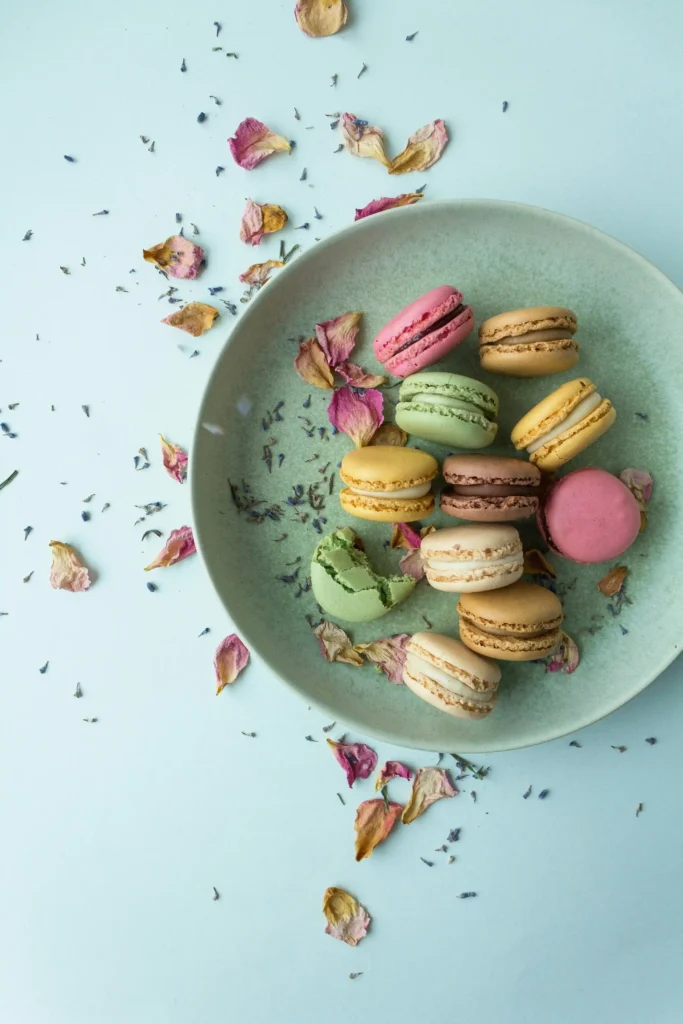
6. Serving Suggestions for French Pastries
Presenting your pastries in an inviting way is just as important as making them taste delicious. Whether you’re hosting a tea party, enjoying a quiet breakfast, or preparing a special dessert for a dinner gathering, here are some ideas to serve your croissants, éclairs, and madeleines that will make them even more irresistible!
Croissants 🥐:
- Classic Breakfast Pairing: Serve croissants fresh out of the oven with a hot cup of coffee or a refreshing glass of fresh orange juice. They’re perfect on their own or can be paired with butter and jam for a classic French breakfast.
- Savory Breakfast: For a heartier meal, serve ham and cheese croissants alongside a simple salad of mixed greens and a light vinaigrette. This creates a satisfying balance between buttery, flaky croissants and crisp, fresh vegetables.
- Afternoon Tea: Croissants also make an elegant addition to any afternoon tea. Arrange them on a tiered serving tray, alongside small finger sandwiches and pastries, for a traditional tea-time experience.
Éclairs 🍫:
- Elegant Dessert: Serve éclairs on a delicate cake stand or platter, dusted with a little powdered sugar for a polished look. Pair them with a scoop of vanilla ice cream or a small bowl of fresh berries to balance the richness of the éclairs with a touch of fruitiness.
- Coffee Pairing: Since éclairs often have a coffee-flavored variation, they pair wonderfully with a rich cappuccino or espresso. The bitter notes of coffee complement the sweet, creamy filling of the éclair, creating a well-rounded dessert experience.
- Celebration Treat: For a special occasion like a birthday or anniversary, use éclairs as part of a dessert spread. Arrange them in a beautiful display with other French treats, such as macarons or tarte Tatin, for an unforgettable dessert table.
Madeleines 🧁:
- Simple and Elegant: Madeleines are perfect for serving with a cup of tea or coffee, as their light, airy texture pairs beautifully with warm beverages. Set them out on a rustic wooden board or place them in a dainty bowl for a cozy treat.
- For Afternoon or Brunch: Present madeleines alongside fresh fruit or a yogurt parfait for a light brunch option. Their delicate sweetness and fluffy texture work well with the freshness of fruit like strawberries, raspberries, or citrus segments.
- Gift Idea: Package your madeleines in a decorative box tied with a ribbon and give them as a homemade gift. They make a charming and thoughtful gift for friends or family, especially for holidays or special occasions.
With these serving suggestions, you can transform these classic French pastries into the highlight of any meal or celebration. Whether served casually with coffee, as part of an elaborate dessert table, or given as a thoughtful gift, croissants, éclairs, and madeleines will always be appreciated for their taste and elegance.
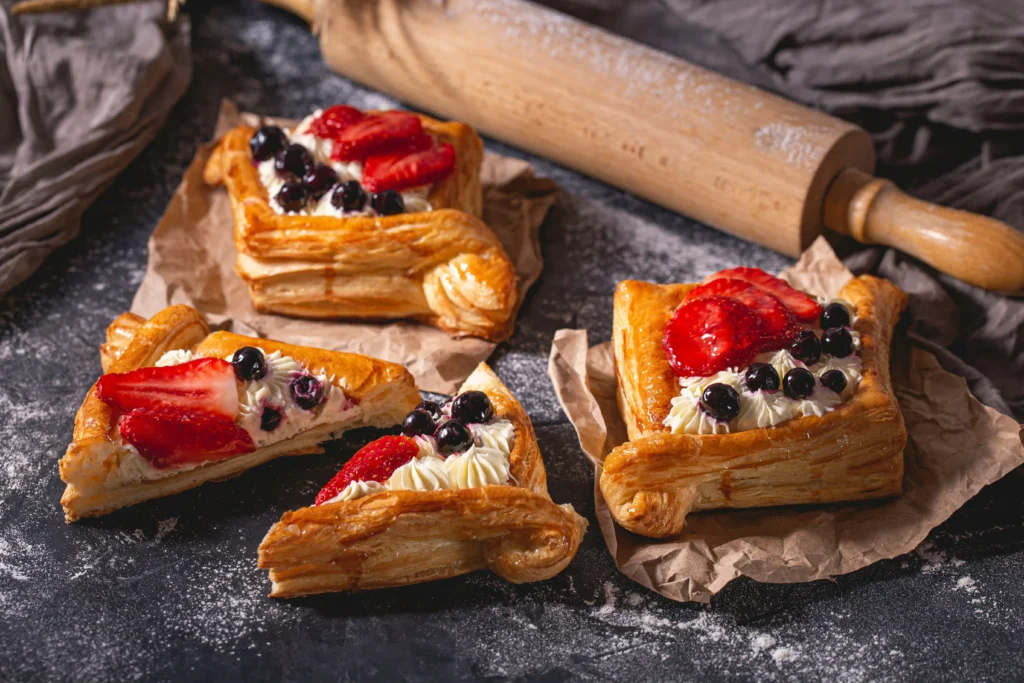
7. Conclusion
The pastries of France have a way of elevating any occasion, bringing a taste of France right to your kitchen. From the flaky, buttery croissants to the rich, creamy éclairs and the delicate madeleines, each pastry brings its own unique charm. While they may seem like a challenge at first, with a little patience and these helpful tips, you’ll find yourself making perfect French pastries at home.
Remember, practice makes perfect, so don’t be afraid to experiment with different variations, fillings, and glazes to make these pastries your own. Whether you’re serving them at a brunch, tea party, or simply enjoying them as an afternoon treat, these pastries are sure to impress.
8. FAQs
Q1: Can I make these pastries ahead of time?
Yes! Many of these pastries can be made ahead. For example, croissants and éclairs can be stored in an airtight container for up to 2 days, and madeleines can be baked a day before serving. Just reheat them in the oven for a few minutes to restore their fresh taste.
Q2: How can I ensure my croissants are extra flaky?
The key to flaky croissants is cold butter, proper dough folding, and patience. Be sure to chill the dough between folds, and don’t rush the lamination process. This will ensure your croissants puff up beautifully when baked.
Q3: Can I freeze the dough for croissants or éclairs?
Yes, both croissant and éclair dough can be frozen. After shaping your croissants, you can freeze them before proofing. When you’re ready to bake, let them thaw and proof before placing them in the oven. For éclairs, you can freeze the choux pastry before baking and bake them directly from frozen.
Q4: What’s the best way to store éclairs?
Éclairs are best eaten fresh, but they can be stored in the fridge for up to 2 days. Make sure to store them in an airtight container to keep the pastry from becoming soggy.
Q5: Can I make a gluten-free version of these pastries?
Yes! There are gluten-free flour blends available that work well in most pastry recipes, including croissants and éclairs. For madeleines, you can use a gluten-free flour mix and ensure that any other ingredients, like baking powder, are also gluten-free.
By following this guide, you’re well on your way to mastering the art of French pastry-making. Now, it’s time to bake these treats, share them with loved ones, and enjoy the delicious results! 🌟
If you want me to make some specific recipes for each one of those let me know in the comments
I hope this was useful to you and I’ll see you in the next recipe
How was this recipe to you ?
There are no reviews yet. Be the first one to write one.

